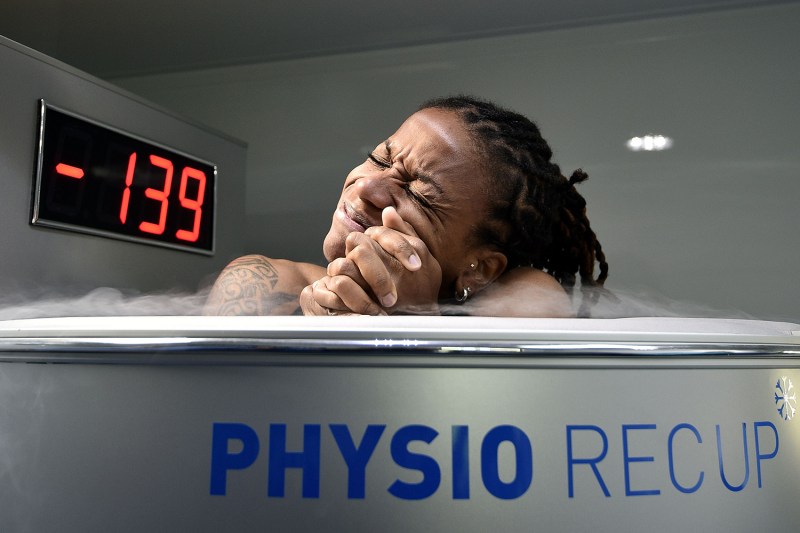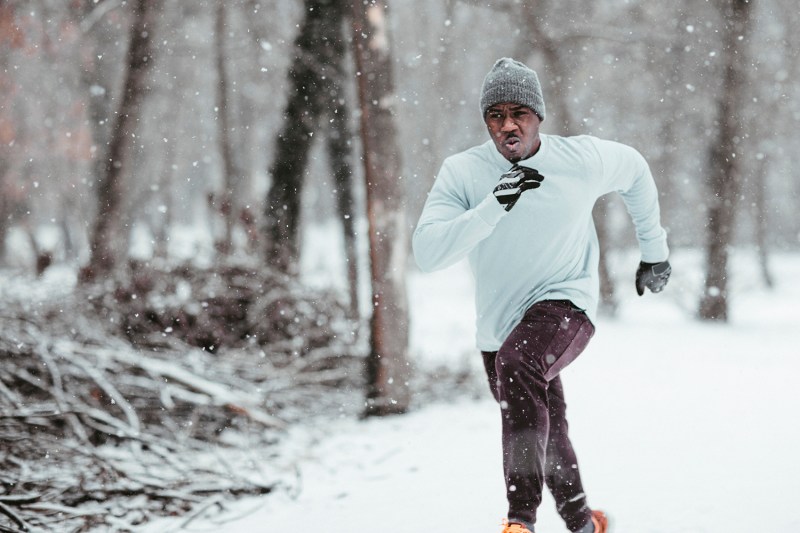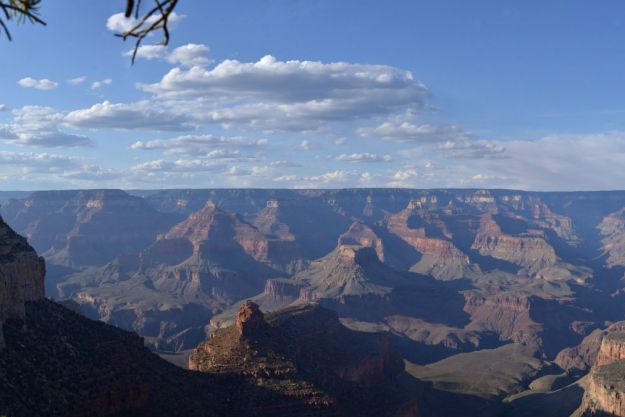Remember watching Han Solo frozen in carbonite or, better yet, Sylvester Stallone as Sergeant John Spartan sentenced to an icy cryogenic “jail” in Demolition Man? Remember thinking, “I would totally pay to do that!”? Now, you can, sort of.
Whole-body cryotherapy (WBC) is all the rage right now among professional athletes, A-list celebrities (Justin Timberlake and LeBron James approve), and anyone dying to know what it’s like to live in Fargo, North Dakota. Like flotation therapy and healing salt caves, it’s a strange, alternative wellness trend that promises everything from healing sports injuries and sharpening your mind to reducing anxiety and prolonging your life. Plus, it’s billed as safe, non-invasive, all-natural, and relatively cheap. But does it deliver? Here’s the low-down on the benefits, safety, and effectiveness of cryotherapy.
What Is Cryotherapy?
Cryo, one of the world’s largest cryotherapy spa franchises, defines whole-body cryotherapy as “the science of exposing the body to subzero temperatures in order to stimulate physical and mental health benefits. It reduces inflammation in the body by boosting an anti-inflammatory chemical.”

If that sounds mild enough, not so fast. Consider that “subzero,” in this case, refers to subjecting your whole body to ultra-low temperatures of up to -300 degrees Fahrenheit for up to three minutes. Incidentally, that’s colder than the North Pole on Mars.
Further Reading
- A Beginner’s Guide to Float Tanks and Flotation Therapy
- The Physical and Mental Benefits of Cold Showers
- What Is a Salt Cave and Why Is So Damned Relaxing?
To prepare for a whole-body session, clients strip down save for gloves, socks, clogs, and a protective headband. Ensuring the skin, hair, and any typically sweaty parts are as dry as possible before stepping in the tank is key.
The actual experience depends on the individual spa, but typically involves one of two treatment methods. Some offer individual-sized canisters just large enough for one person to stand in. The enclosure wraps around the body with the torso, mid-section, and legs inside the device while the head remains outside the unit at room temperature. For an alternative, group cryo-experience, some spas provide a sauna-like chamber that fits a handful of adults.
Liquid nitrogen supercools the chamber to blistering, sub-sub-zero temperatures. Most sessions last between two to three minutes.
In either case, liquid nitrogen supercools the chamber to blistering, sub-sub-zero temperatures. Most sessions last between two to three minutes. In his piece, “Here’s What Happens To Your Penis In a -140 Degree Chamber,” Brian Moylan recounts his first cryotherapy experience:
“The first 30 seconds are the hardest. As the cold envelops the whole body it gets a little hard to breathe, like a golden retriever has decided to take a nap on your chest. [The cryotherapist] tells me to pace around in a circle in the small space, which seems to help at least to take your mind off what seems to be an assault on every sense.”
Because you’re wondering, Moylan confirms the male genitalia is a resilient apparatus indeed. It appears evolution has given us the fortitude for our most precious cargo to survive three full minutes of deep-space cold.
Isn’t That Insanely Dangerous?
The short answer: It can be. Dermatologists have used cryotherapy for decades as a safe, effective treatment in minor procedures like freezing away warts. However, so-called whole-body cryotherapy is a different animal altogether.
Disappear down the Google rabbit hole long enough, and you’ll find stories of people being injured and even dying in cryotherapy-related incidents (admittedly the latter was due to carelessness and not the treatment itself). At any respectable cryotherapy spa, however, the procedures are quite safe. The most common injuries are cold burns and local skin irritation, but even these are rare. The people most at risk during cryotherapy treatments are those with moderate to severe health conditions: poor circulation, uncontrolled high blood pressure, heart or lung disease, and neuropathy (nerve disease) in the feet or legs.
What Are Cryotherapy Benefits?
The purported health benefits of cryotherapy are huge. The most common claims include:
- Accelerated healing from sports injuries.
- Improved athletic performance.
- Relief from chronic pain caused by rheumatoid arthritis and other similar conditions.
- Increased weight loss (with the potential to burn up to 800 calories per session).
- Improved cognition.
- Reduced anxiety and improved mood.
Read enough pro-cryo websites and the long list of other potential benefits includes everything from curing depression and fixing your asthma to sculpting your abs and increasing testosterone production.
Does Cryotherapy Actually Work?
The thinking seems to be that since cold treatments like over-the-counter ice packs and cold water immersion (CWI) therapy can soothe aching joints and muscles, really cold treatments must work even better. Proponents believe cryotherapy works by triggering the body’s natural response to hypothermia with a heaping dose of adrenaline release to boot. In theory, it should force all of the blood to the core and vital organs where it’s warmed and super-oxygenated before being returned to the extremities.

Most of the plaudits it receives are anecdotal with little evidence that the positive results are anything more than a placebo effect. In fact, the science behind cryotherapy is muddy at best and most experts agree the jury is still out. Dr. Robert Shmerling of Harvard Health Publishing cautions:
Most of the plaudits it receives are anecdotal with little evidence that the positive results are anything more than a placebo effect.
“From the available evidence, it’s hard to know if whole-body cryotherapy reliably prevents or treats any particular condition, or if it speeds recovery or improves athletic performance. And even if it did, there’s little proof that it’s more helpful than much less expensive cryotherapy options, such as simply applying ice to a sore area.”
What’s more, the FDA has warned cryo-spas to stop making bold claims about their treatments. In a sternly worded warning, the agency made clear that they do not endorse cryotherapy as an effective treatment of anything:
“Despite claims by many spas and wellness centers to the contrary, the U.S. Food and Drug Administration (FDA) does not have evidence that WBC effectively treats diseases or conditions like Alzheimer’s, fibromyalgia, migraines, rheumatoid arthritis, multiple sclerosis, stress, anxiety, or chronic pain … In fact, not a single WBC device has been cleared or approved by the agency in support of these claims.”
How Much Does Cryotherapy Cost?
Like gym and yoga memberships, every cryotherapy provider is different. The first session is typically offered at a deep discount to get cryo first-timers in the door. Depending on the quality and location of the spa, you can expect to pay anywhere between $40 to $80 per session thereafter. A thorough, whole-body treatment could run into hundreds of dollars. It’s worth noting that, as an unproven alternative medical treatment, cryotherapy is rarely covered by U.S. health insurers.
Obligatory ‘Talk to Your Doctor’ First Warning
There’s little evidence that cryotherapy is either good or bad. What every independent expert seems to agree on is that would-be cryotherapy patients should talk to their doctor before stepping into the chamber.
No matter what, stuffing your half-naked body inside a stainless space-age cauldron bubbling over with icy nitrogen mist makes for one hell of an Instagram selfie. And, hey, at least you know your balls can (probably) survive the torture.
Editors' Recommendations
- Beginner’s Guide to Trail Running and What You Need
- 10 Best Workouts to Do While Watching TV
- Wilderness First Aid: What to Pack and Know Before You Hit the Trail


